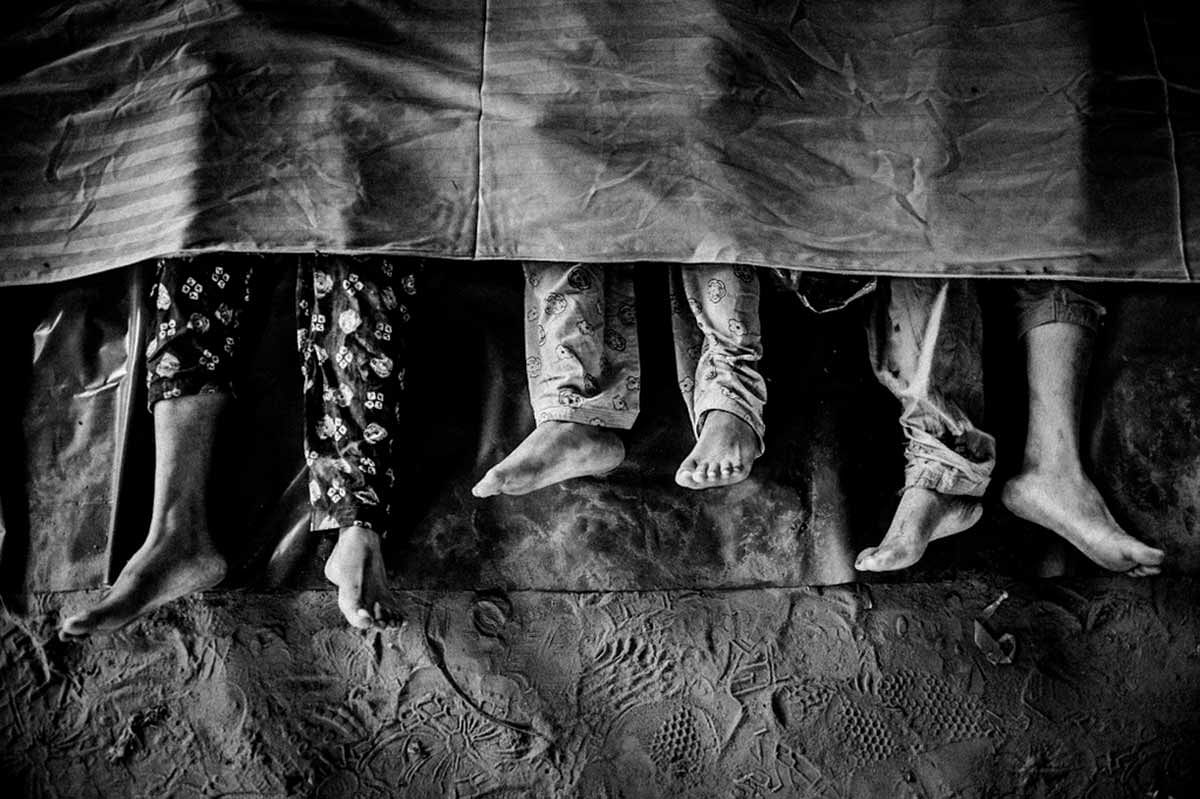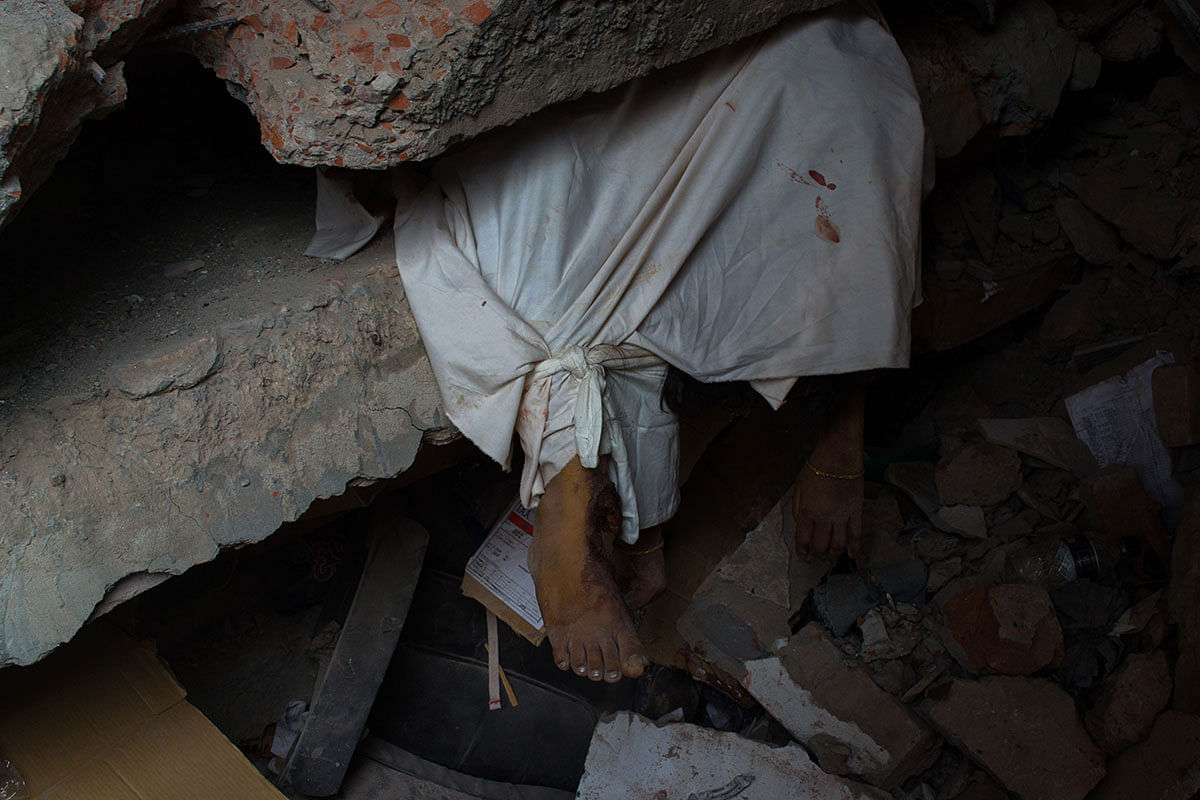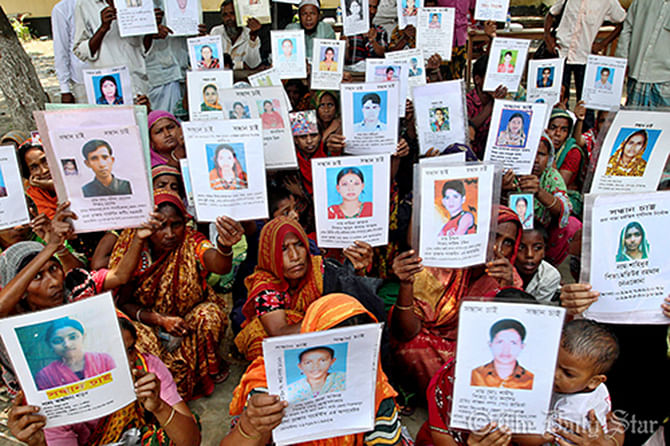1,841 workers killed in 12 yrs
Building collapses, factory fires, and other incidents in RMG sector claimed 1,512 workers' lives between 2005 and 2013 while 1,691 were killed between 1990 and 2013
Fardaus Mobarok
AT least 1,841 workers have been killed in different types of accidents including building collapse and fire in the readymade garment industry in the last 12 years, according to Bangladesh Institute of Labour Studies (Bils).
More than 9,595 garment workers have been injured in the incidents, many of whom have lost their ability to work. Many of the injured and their families did not get compensation.

At least 1,135 workers were killed and 2,500 others injured in the Rana Plaza collapse on April 24 last year at Savar.
The worst disaster in the history of the garment industry happened just a few months after the Tazreen Fashions fire which claimed over a hundred lives.
A big number of garment factory buildings are structurally unsafe as they are illegally converted into factories that operate day and night to meet production targets.

Poor compliances, sub-standard working environment, sub-contracting business style and lower prices offered by the international retailers are the other reasons for the frequent deadly incidents.
Labour leaders blame the accident on lack of good will on the part of Bangladesh Garment Manufacturers and Exporters Association (BGMEA).
Syed Sultan Uddin Ahmed, assistant executive director of the Bils said, "The BGMEA forms committees after every accident at any garment factory just to save their people instead of punishing the responsible garment owners."
For example, he said, Delwar Hossain, managing director of Tazreen Fashions Ltd, was allowed to hold a press conference at the BGMEA office just three days after the deadly fire that killed 112 workers and injured many others.

"But after the Rana Plaza collapse, they have been the sufferers," he said adding, "The owners have been bound to accept many things under pressure from the buyers."

"There are some genuine businessmen in the garment industry who had some realisations after the tragedy and are trying to make their factories compliant," said Sultan Uddin.
After every deadly incident, the international communities reacted sharply. In some cases, the retailers scrapped purchasing agreements with the factory or cancelled the orders.
After the Tazreen incident, the US threatened to cancel GSP, a duty-waiver facility for some selected items from the LDCs to the US market.
The United States finally scrapped the Generalised System of Preferences (GSP) following the Rana Plaza building collapse, citing Bangladesh's failure in ensuring internationally-recognised worker rights.
The Bils data shows that building collapses, factory fires, and other incidents in the country’s largest earning sector claimed the lives of 1512 workers between 2005 and 2013 while 1691 workers were killed between 1990 and 2013.
A Bils official said the data has been prepared based on news reports published in 14 national dailies.
The Spectrum Sweater Industries Ltd, located at Savar about 30 kilometres northwest of Dhaka, collapsed on April 11, 2005 after additional floors, that had been illegally built, gave way. The collapse killed 64 people and injured another 80.
Less than a year later, a five-storey building housing Phoenix Garments in Tejgaon collapsed on February 25, 2006, killing more than 21 workers.
The year 2006 saw another deadly incident outside the capital. More than 65 workers were killed in a fire at KTS Composite Textile Mills in the port city of Chittagong.
Other incidents in the garment industry which made headlines globally include death of eight workers in a fire at Smart Export Garments in the capital in January 2013, death of 21 workers in a fire at Garib and Garib Garments in February 2010 and death of 20 workers in a fire at Narayanganj Sun Knitting in 2005.
There are over 5,000 readymade garment factories in the country in total.
Around 4,000 of them are members of the Bangladesh Garment Manufacturers and Exporters Association (BGMEA) that make clothes for international brands and employ about 3.5 million workers.
Bangladesh earns about $22 billion a year from garment export, accounting for over 80 percent of its annual export earnings.

 For all latest news, follow The Daily Star's Google News channel.
For all latest news, follow The Daily Star's Google News channel. 



Comments